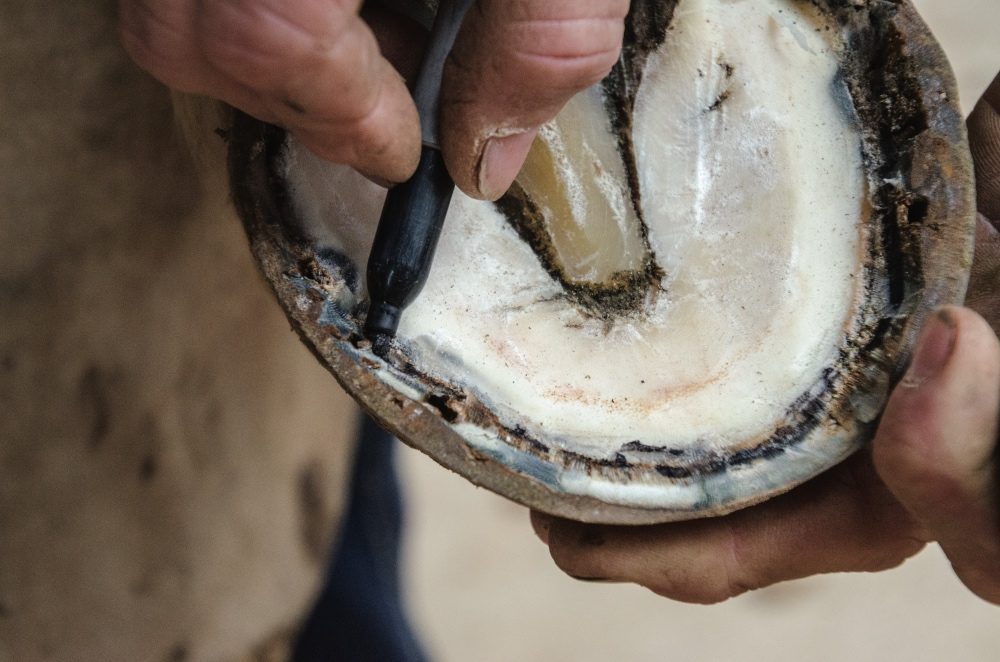Teaching a new farrier how to properly nip the hoof wall can get hairy when working on a client’s horse. However, there’s a technique that you can use to help educate while also ensuring the horse won’t be trimmed too short.
When training new farriers, Vernon, Texas, shoer Blane Chapman teaches them with a simple method. He begins by removing chalky exfoliating sole to smooth waxy sole to find the solar white line interface to determine the depth of the foot. After cleaning out the frog, sulcus and commissures, he evaluates the sole and demonstrates how he maps the foot.
“I want that foot to be as close to the perfect foot as it can be on that individual, with its conformation, without manipulating it to the point where it adversely affects the horse,” Chapman says. “We know where the internal structures are, what they are, how they function and what angles they need to be at to perform at a functional level. That’s what my first and foremost task is — to keep the horse within those parameters as closely as I can.”
Using a black marker, he draws a line to indicate where the new farrier can nip.
“I keep the marker flat against the edge of the foot and draw a line along the inside of the hoof wall,” he explains. “I tell them to stay at the top of the black mark. This prevents them from gutting the quarters and nipping the toe too short. They’re down to good, waxy, exfoliated, live sole.”
After the beginning farrier nips the hoof wall, it’s still not a finished product. Chapman points out that the wall is still too long, but he’d rather that they start at this point and he can come in behind them.
“We still have foot length, but it’s safe,” he says. “We can work from that. If they cut it off too short once and try to fix it, it’s still going to be too short.”
Gain more insight from Blane Chapman by reading “Training the Next Generation of West Texas Farriers” in the September/October 2019 issue of American Farriers Journal.









Post a comment
Report Abusive Comment